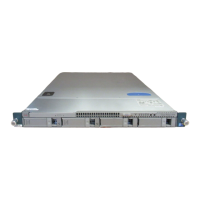© 2013 Cisco and/or its affiliates. All rights reserved. This document is Cisco Public Information. Page 12 of 48
Note: Port classifications are similar to port groups defined in VMware vCenter for VMware ESX environments.
However, in VMware vCenter, creation of a port profile on the Cisco Nexus 1000V results in the automatic creation
of a port group, whereas in Microsoft SCVMM, the user has to manually create a port classification. The extra step
is needed because a port classification can represent network policies from more than one provider.
Logical Network and Network Sites
The Microsoft SCVMM networking hierarchy or object model consists of the following new network constructs:
Logical Networks, Network Sites, and Virtual Machine Networks (VM Networks). Microsoft SCVMM introduced this
hierarchy to enable the consumer of network resources (server and tenant administrators) to automate the
provisioning of virtual machine networks. Also, this new networking hierarchy enables the server administrator to
request and consume network resources without needing to understand the underlying network implementation
details.
A Logical Network models distinct networks (or types of networks) managed by an enterprise. The Logical Network
abstraction hides the VLANs and IP subnets that provide isolation from all the consumer and users (virtual
machine network administrators, tenant administrators, and server administrators) other than the fabric
administrator managing the physical fabric. In other words, a Logical Network is composed of one or more network
sites, and each network site is a group of VLANS, IP subnets, or VLAN and IP subnet pairs.
Consider a hypothetical enterprise, Avatar.local, which operates two data centers: one in San Francisco and one
in New York. The enterprise has two subnets at each site:
●
The San Francisco site uses subnet 10.0.0.0/8 to provide an Internal network. The subnet 20.0.0.0/8 is
used to create a DMZ network.
●
The New York site uses subnet 30.0.0.0/8 to provide an Internal network. The subnet 40.0.0.0/8 is used to
create a DMZ network.
To model the network fabric of Avatar.local, the Microsoft SCVMM fabric administrator creates two Logical
Networks: Internal and DMZ. The internal Logical Network has two Network Sites: 10.0.0.0/8 and 30.0.0.0/8. The
DMZ Logical Network has two Network Sites: 20.0.0.0/8 and 40.0.0.0/8 (Figure 9).
Figure 9. Logical Network Modeling the Physical Network Fabric

